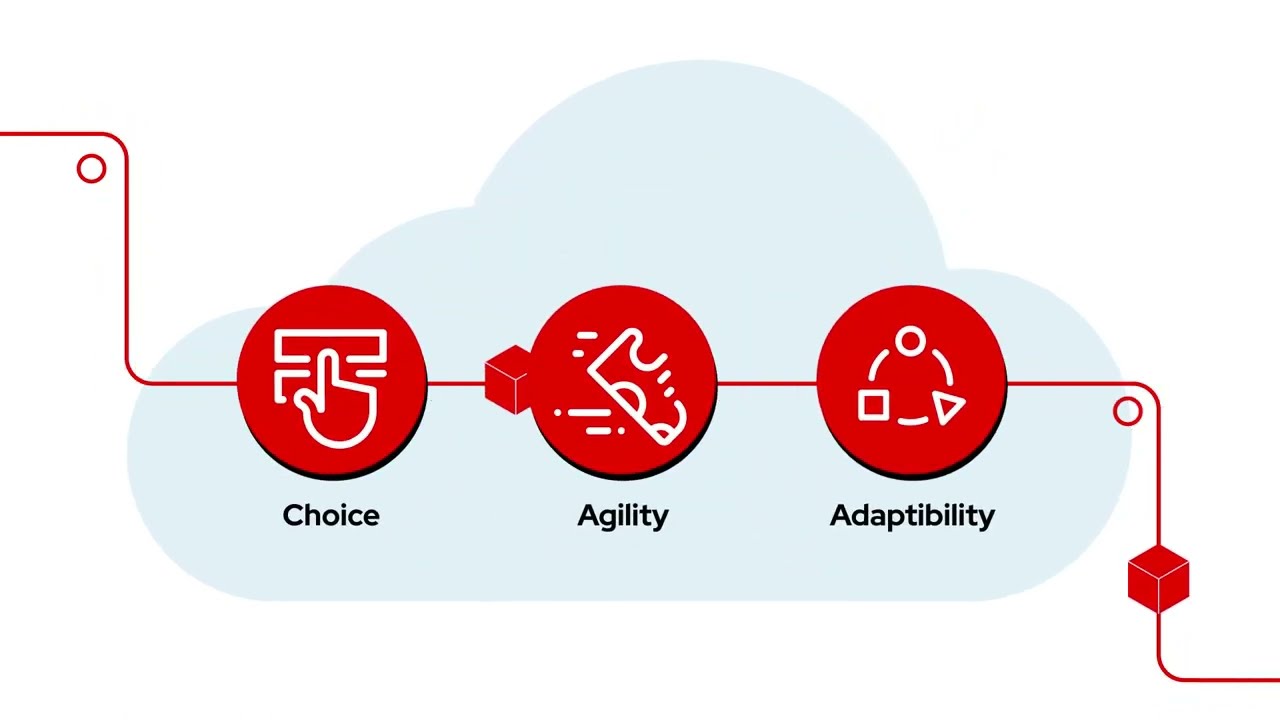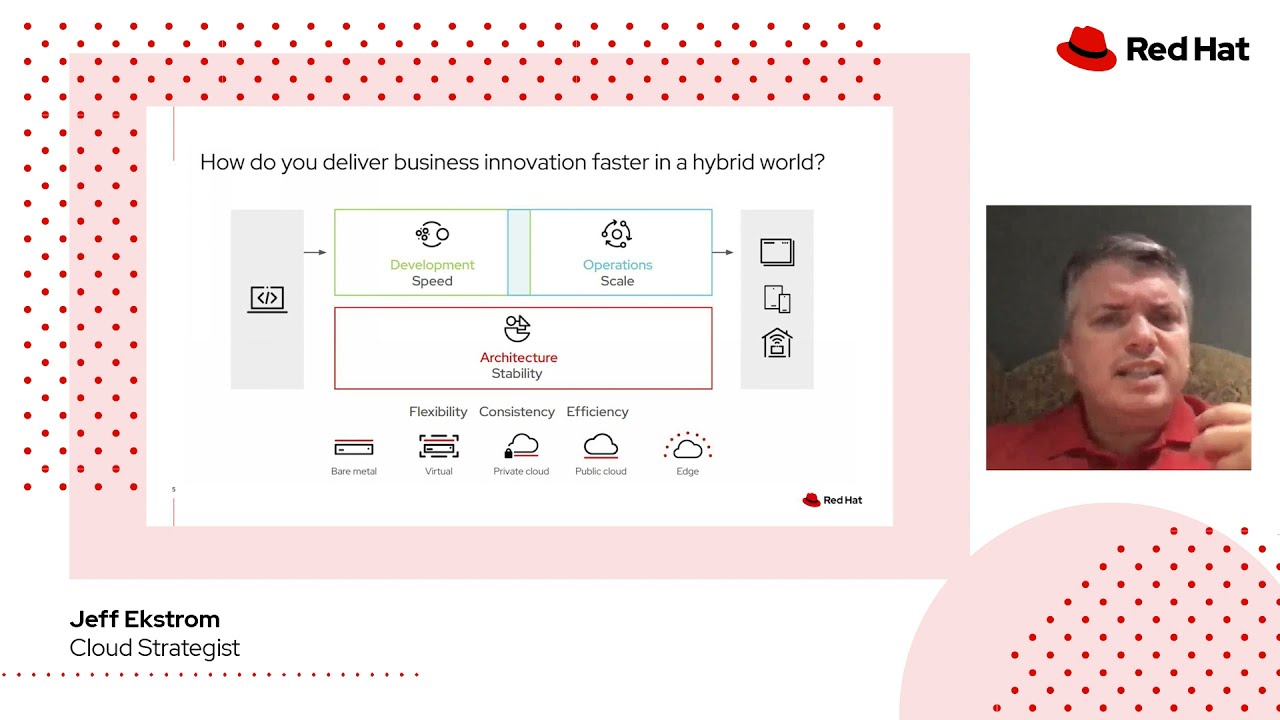
Red Hat Hybrid Cloud is a cloud computing solution that combines the best of both worlds – private and public clouds. It provides businesses with a seamless, secure, and flexible infrastructure that can adapt to their unique needs. In this article, we will discuss in detail what Red Hat Hybrid Cloud is, how it works, and why it’s important for your business.

Red Hat Hybrid Cloud is a platform that lets you run applications and workloads across different environments, including on-premises data centers, private clouds, and public clouds. With Red Hat Hybrid Cloud, you can seamlessly move workloads between these environments without any disruptions or downtime.
The platform is built on open-source technologies like Kubernetes, OpenShift, and Ansible, which means it’s highly scalable, flexible, and customizable. You can use it to build, deploy, and manage applications faster and more efficiently than traditional IT infrastructures.

Red Hat Hybrid Cloud works by providing a unified management console that allows you to manage all your workloads across different environments from a single dashboard. The platform uses automation and orchestration to simplify complex tasks like application deployment, scaling, and management.
It also provides tools and services like software-defined networking, security, and monitoring, which help you maintain a high level of control over your IT environment. With Red Hat Hybrid Cloud, you can deploy workloads on-premises, in public clouds like AWS, Azure, or Google Cloud, or in a combination of both.

Red Hat Hybrid Cloud provides several benefits that can help your business grow and thrive. Here are some of the key advantages of using Red Hat Hybrid Cloud:

Here are some real-world examples of how businesses are using Red Hat Hybrid Cloud to achieve their goals:
Mercedes-AMG Petronas Formula One Team uses Red Hat Hybrid Cloud to manage its complex IT environment. The team runs multiple workloads across different environments, including on-premises data centers, public clouds, and edge locations.
With Red Hat Hybrid Cloud, the team can deploy and manage its applications more efficiently, which helps it stay competitive in the fast-paced world of Formula One racing. The team has also been able to reduce costs and improve agility, thanks to the platform’s flexible and scalable architecture.
Banco Santander, one of the largest banks in Europe, uses Red Hat Hybrid Cloud to support its digital transformation efforts. The bank has implemented a multi-cloud strategy, using Red Hat OpenShift and other technologies to run its applications across different environments.
With Red Hat Hybrid Cloud, Banco Santander can deliver new services faster and with greater reliability. The platform has also helped the bank improve security, reduce costs, and increase customer satisfaction.
Here’s how Red Hat Hybrid Cloud compares to other cloud computing solutions:
Unlike public clouds, Red Hat Hybrid Cloud provides businesses with greater control over their IT environment. With Red Hat Hybrid Cloud, you can choose where to run your workloads based on your business needs. You can also move workloads between environments without any downtime or disruptions.
Red Hat Hybrid Cloud offers several advantages over traditional private clouds, including greater scalability, flexibility, and cost savings. You can easily scale up or down your infrastructure as required, without any additional investments in hardware. You can also leverage public cloud resources when needed, which helps you optimize resource utilization.
Red Hat Hybrid Cloud is a multi-cloud solution that lets you run workloads across different environments, including on-premises data centers, private clouds, and public clouds. Unlike traditional multi-cloud solutions, Red Hat Hybrid Cloud provides a unified management console that allows you to manage all your workloads from a single dashboard. This simplifies the complexity of managing multiple clouds, reduces costs, and improves overall agility.
Here are some tips for businesses that want to get the most out of Red Hat Hybrid Cloud:
Red Hat Hybrid Cloud is a cloud computing solution that combines private and public clouds. It provides businesses with a seamless, secure, and flexible infrastructure that can adapt to their unique needs.
Yes, Red Hat Hybrid Cloud is compatible with most existing IT infrastructures. You can use it to run workloads on-premises, in public clouds, or in a combination of both.
Red Hat Hybrid Cloud provides strong security features like software-defined networking, identity management, and encryption that protect your workloads across different environments. You can also set up policies and controls that ensure compliance with regulatory requirements and industry standards.
Yes, Red Hat Hybrid Cloud is highly scalable and can adapt to your changing business needs. You can easily scale up or down your infrastructure as required, without any additional investments in hardware.
Red Hat Hybrid Cloud provides several benefits, including flexibility, scalability, cost savings, security, and access to the latest technologies and innovations.
Red Hat Hybrid Cloud is a cloud computing solution that provides businesses with a seamless, secure, and flexible infrastructure that can adapt to their unique needs. It combines the best of both worlds – private and public clouds – to provide businesses with greater control over their IT environment. By embracing Red Hat Hybrid Cloud, businesses can reduce costs, improve agility, and stay competitive in today’s fast-paced digital world.In conclusion, Red Hat Hybrid Cloud is a powerful solution for businesses that need to run their workloads across different environments. It provides several benefits, including flexibility, scalability, cost savings, and security, which can help businesses achieve their goals faster and with greater efficiency.
By leveraging open-source technologies like Kubernetes, OpenShift, and Ansible, businesses can build modern, cloud-native applications that can scale and adapt to changing business needs. With Red Hat Hybrid Cloud, businesses can also embrace a multi-cloud strategy that lets them choose where to run their workloads based on their unique needs.
If you’re considering Red Hat Hybrid Cloud for your business, make sure you start with a clear strategy, focus on automation, and ensure security and compliance. By following these tips, you can maximize the benefits of Red Hat Hybrid Cloud and achieve success in today’s rapidly changing digital landscape.